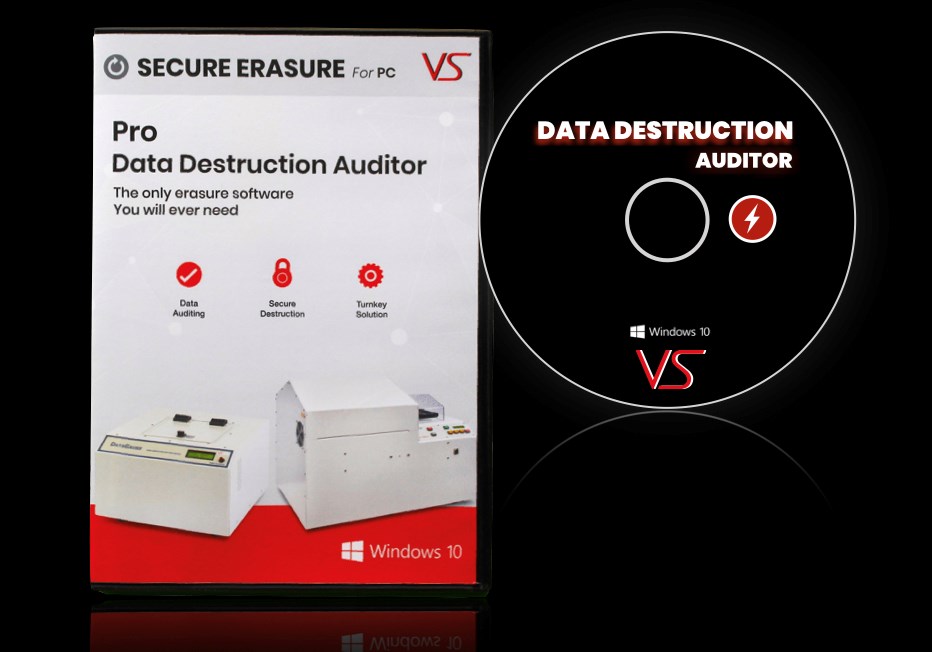The Effect of Effective Data Destruction on Cyber Security Danger Administration
The Effect of Effective Data Destruction on Cyber Security Danger Administration
Blog Article
The Importance of Effective Information Devastation Practices in Shielding Sensitive Details and Ensuring Computer Safety
In an era where information violations are progressively typical, the significance of effective data destruction methods can not be overstated. Applying durable information damage techniques not only alleviates these threats but likewise lines up with lawful conformity demands, making sure that companies promote their online reputation and foster customer trust fund.
Recognizing Information Damage
Comprehending data destruction is essential in today's digital landscape, where delicate info can quickly be compromised. Efficient information damage entails not merely ensuring but deleting files that information is irretrievable through comprehensive techniques. This process is essential for organizations that manage personal client info, copyright, or inner records, as any type of breach can bring about serious financial and reputational consequences.
Information destruction incorporates various strategies, including shredding physical media, degaussing magnetic storage tools, and employing software-based options that overwrite information multiple times. Each approach serves a specific function and must straighten with the level of sensitivity of the information being dealt with. For instance, physical damage is frequently preferred for hard disk drives consisting of highly personal data, while software application methods might suffice for much less sensitive information.
In addition, sticking to market requirements and policies, such as the General Data Protection Regulation (GDPR) or the Medical Insurance Transportability and Accountability Act (HIPAA), is important for conformity and to minimize legal dangers. Organizations has to develop a robust information destruction plan, train workers on best techniques, and on a regular basis audit their treatments to make certain that all sensitive details is disposed of securely and efficiently.
Dangers of Inadequate Practices
Poor information destruction techniques expose companies to significant dangers that can have far-ranging effects. When sensitive details is not properly dealt with, it remains vulnerable to unapproved accessibility, which can cause information violations and identity burglary. Such occurrences not just jeopardize the safety and security of individuals yet additionally taint the company's credibility, causing a loss of client depend on and potential monetary effects.
Additionally, governing compliance is significantly strict in several industries. Failing to adhere to information devastation policies can result in substantial penalties and lawsuits against companies. These charges can divert and strain economic resources focus from core organization procedures.
Furthermore, the misuse of residual information can bring about intellectual residential property burglary or company espionage, jeopardizing affordable benefits (data destruction). The effect of poor data devastation prolongs past instant financial losses; it can likewise result in long-term damages to brand integrity and market setting

Organizations need to acknowledge that information safety is not solely concerning avoiding violations; it additionally encompasses the responsible management of data throughout its lifecycle. Neglecting effective data destruction protocols can have catastrophic implications, highlighting the requirement for robust measures to mitigate these risks.
Best Practices for Data Damage
Carrying out reliable information damage methods is essential for safeguarding delicate details and keeping conformity with governing standards. Organizations must take on a multi-faceted method to guarantee that information is irretrievable, therefore protecting against unauthorized gain access to and prospective violations.
First, information should be categorized based on level of sensitivity, permitting companies to use appropriate destruction methods tailored to the level of danger. For digital information, using software-based data-wiping devices that abide by sector criteria can effectively overwrite existing data. Physical look at these guys destruction techniques, such as shredding or degaussing, are critical for tools that save delicate info, guaranteeing complete removal.
Establishing a clear data retention plan is crucial, outlining how much time different types of information should be retained before destruction. Normal audits of information storage space systems are additionally needed to recognize outdated or unnecessary information requiring removal.
In addition, training workers on the importance of data devastation and the particular methods to follow fosters a culture of security within the company. Preserving paperwork of data devastation refines offers responsibility and supports conformity with interior plans and external guidelines. By adhering to these ideal techniques, organizations can dramatically alleviate the risks related to data exposure.
Legal and Compliance Factors To Consider

Failure to adhere to these policies can result in severe penalties, consisting of significant fines and reputational damages. Organizations should execute a durable information damage plan that aligns with these legal structures and gives clear guidelines on the proper techniques of information disposal, whether physical shredding or digital wiping.
Additionally, maintaining paperwork of information destruction activities is necessary for demonstrating compliance throughout audits or inspections. By prioritizing legal and compliance considerations, organizations can improve their information security position and foster depend on with customers and stakeholders, inevitably adding to a more protected data monitoring setting.
Benefits of Effective Data Devastation
Effective information destruction techniques extend beyond mere compliance; they provide considerable advantages to companies that prioritize them. By ensuring go to these guys that sensitive info is irretrievably ruined, organizations alleviate the danger of information violations and the prospective economic effects connected with them. This aggressive method not just safeguards against unauthorized gain access to but also improves the total reliability of the company in the eyes of clients and stakeholders.
Executing durable data damage methods, such as physical devastation of storage devices or sophisticated information cleaning techniques, adds to the conditioning of a company's cybersecurity posture. data destruction. It lowers the possibility of intellectual residential property theft and secures exclusive information, thereby keeping an affordable edge out there

Conclusion
In conclusion, efficient information destruction methods are essential for protecting delicate info and enhancing general computer system protection. By carrying out detailed approaches such as software, degaussing, and shredding overwriting, organizations can reduce the dangers connected with unapproved gain access to and information violations. Adherence to regulative requirements, consisting of GDPR and HIPAA, additional enhances conformity and safeguards versus lawful consequences. Ultimately, a commitment to durable information destruction strategies promotes a society of responsibility, consequently strengthening a company's cybersecurity stance and maintaining client depend on.

Report this page